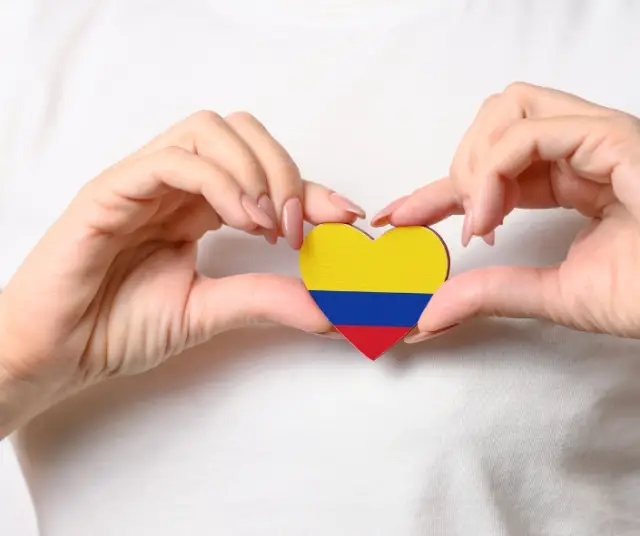The history of Colombia's independence is a fascinating and complex story that reflects the fighting spirit, cultural diversity and the search for freedom of a people who were under the yoke of Spanish colonialism. This process, which unfolded over several decades, was marked by numerous significant events, charismatic leaders, and extraordinary sacrifices.
Before the arrival of the Spanish conquistadors, the territory we know today as Colombia was inhabited by various indigenous cultures, such as the Muiscas, the Quimbayas and the Taironas. However, in 1499, the Spanish navigator Alonso de Ojeda arrived on the shores of the La Guajira peninsula, marking the beginning of the Spanish conquest in the region.
For more than three centuries, Colombia was part of the vast Spanish Empire, subject to a colonial system that exploited its natural resources and its native population. The wealth of the land, especially in gold and silver, attracted numerous European settlers eager for wealth and power. However, this exploitation caused discontent among local inhabitants, thus fueling the seeds of resistance and the fight for independence.
The First Independence Movements: The Spark of the Revolution
The emergence of the first independence movements in Colombia was influenced by a combination of internal and external factors that catalyzed discontent and the search for freedom among the population. One of the most significant elements was the dissemination of Enlightenment ideas and revolutionary ideals that emerged during the 18th century in Europe, particularly in the wake of the French Revolution.
Figures such as Antonio Nariño and Camilo Torres played a fundamental role in the dissemination of these ideas among the intellectual and political elite of New Granada. Nariño, in particular, was noted for his courageous fight for freedom of the press and his efforts to translate and disseminate the Declaration of the Rights of Man and of the Citizen, which resonated with those seeking emancipation from Spanish rule.
Discontent with the Spanish colonial system was also fueled by the economic and social inequalities imposed by the colonial regime. The exploitation of natural resources and indigenous and Afro-descendant labor for the benefit of the Spanish metropolis generated deep resentment among the local population. Furthermore, trade restrictions imposed by Spain limited economic development and hampered the growth of an emerging business class in the region.
The Cry of Independence and the Armed Struggle
On July 20, 1810, a crucial milestone in the history of Colombia took place in Bogotá, with the famous Cry of Independence. This event, led by figures such as José Acevedo y Gómez, Francisco José de Caldas and Antonio Nariño, marked the beginning of a revolutionary process that sought emancipation from Spanish rule.
Following the initial outcry, local governments were formed and established in various regions of Colombia, each fighting for independence and sovereignty. However, armed struggle became the main means of achieving these objectives. Figures such as Simón Bolívar, Francisco de Paula Santander, and Antonio José de Sucre emerged as prominent military leaders, leading rebel armies against Spanish royalist forces.
Battles and Conquests: The Road to Freedom
Colombia's fight for independence was marked by a series of crucial battles that determined the fate of the nation. Battles such as that of Boyacá, where Bolívar led a decisive victory that ensured the independence of New Granada, and the Battle of Carabobo in Venezuela, where patriot forces led by Bolívar obtained an important victory over the royalists, were fundamental to the advance of the independence process.
The Admirable Campaign, led by Bolívar in 1813, was also a crucial moment in the fight for independence. During this campaign, Bolívar managed to liberate much of Venezuela and advance towards Colombia, thus consolidating his position as a military and political leader in the region.
Consolidation and Post-Independence Challenges
Following the proclamation of Colombia's independence on August 7, 1819, the country faced a series of challenges to consolidate its sovereignty and establish a stable government. However, this period was marked by political fragmentation and internal disputes that threatened the stability of the young nation.
One of the main tensions that arose after independence was the struggle between centralists and federalists to define the structure of the new Colombian State. While the centralists advocated a centralized government with powers concentrated in Bogotá, the federalists defended decentralization and autonomy of the regions. These ideological differences led to internal conflicts that undermined national cohesion and hampered consolidation efforts.
Furthermore, rivalries between liberals and conservatives emerged as another source of division in post-independence Colombia. These two political groups represented contrasting interests in issues such as religion, the economy, and the structure of the state, resulting in constant confrontations and, in some cases, armed conflicts. The civil war of 1860 to 1862, known as the War of the Supremes, was one of the bloodiest episodes of this political rivalry.
Political instability was also exacerbated by social and economic tensions in post-independence Colombia. The unequal distribution of land and natural resources, as well as the lack of economic opportunities for large sectors of the population, fueled social discontent and contributed to political instability. The growing gap between rich and poor exacerbated tensions and undermined the legitimacy of the central government.
